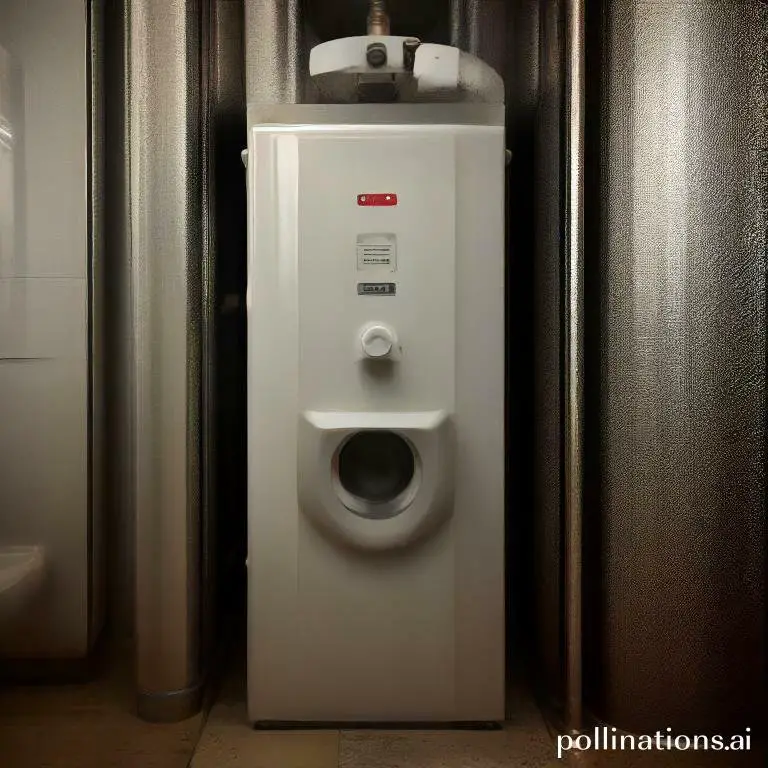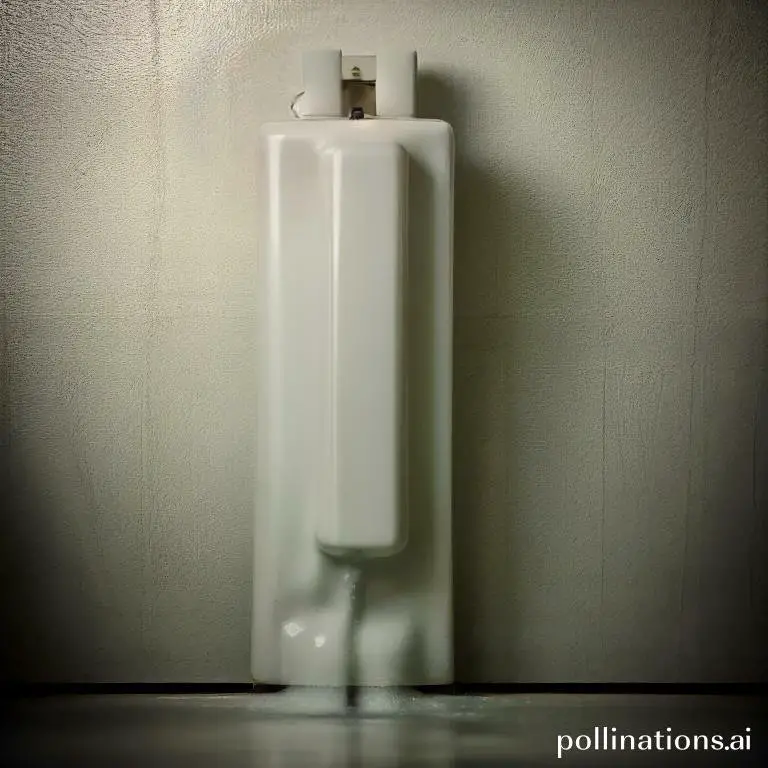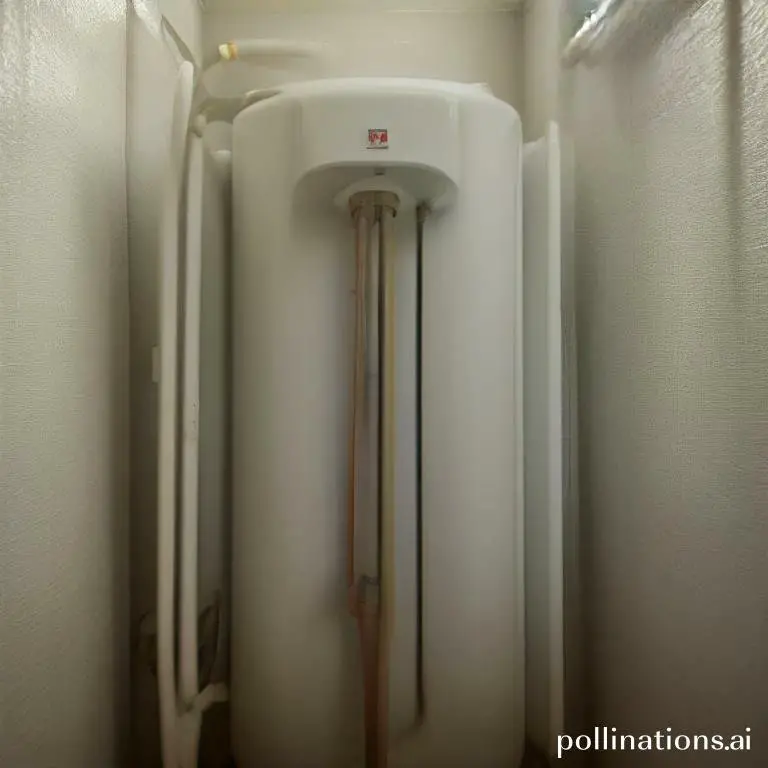
II. Sediment buildup in the water heater tank can reduce its efficiency and cause it to work harder, resulting in higher energy bills.
III. Regular flushing of the water heater can remove the sediment buildup, improve its efficiency, and save you money on your energy bills.
Flushing your water heater regularly is a simple yet effective way to maintain its efficiency and reduce energy consumption. Over time, sediment and mineral deposits can build up inside the tank, causing your water heater to work harder and consume more energy.
By flushing out these deposits, you can ensure that your water heater operates at its optimal level, saving you money on energy bills and extending the lifespan of your appliance. Let’s scrutinize the benefits of flushing and how it can help you conserve energy and save costs.
What is flushing?
Flushing, in the context of water heaters, refers to the process of removing sediment and mineral buildup from the tank. Over time, minerals and sediment can accumulate at the bottom of the tank, which can affect the efficiency and performance of the water heater.
1. Definition of flushing
Flushing involves draining the water heater and allowing fresh water to flow through the tank to remove any accumulated debris. This process helps to maintain the longevity of the water heater and ensure optimal performance.
2. Why is flushing important for water heaters?
Regular flushing of water heaters is vital for several reasons:
- Prolongs the lifespan: Flushing removes sediment and mineral buildup, which can cause corrosion and reduce the lifespan of the water heater. By flushing regularly, you can extend the lifespan of your water heater.
- Improves efficiency: Sediment buildup can insulate the heating element, making it less efficient and causing the water heater to work harder to heat the water. Flushing helps to improve the efficiency of the water heater, resulting in energy savings.
- Prevents clogs: Sediment accumulation can lead to clogs in the water lines, resulting in reduced water flow and pressure. Flushing helps to prevent clogs and ensures a steady supply of hot water.
It is recommended to flush your water heater at least once a year to maintain its performance and efficiency. Although, the frequency may vary depending on the water quality in your area. If you notice signs of sediment buildup or decreased performance, it may be necessary to flush the water heater more frequently.
| Benefits of Flushing | Frequency |
|---|---|
| Extended lifespan | At least once a year |
| Improved efficiency | May vary depending on water quality |
| Prevents clogs |
How often should you flush your water heater?
Regular maintenance of your water heater is essential to ensure its optimal performance and longevity. One crucial aspect of maintenance is flushing your water heater at appropriate intervals. Flushing helps remove sediment buildup, improves energy efficiency, and enhances the overall lifespan of your appliance.
Factors that affect flushing frequency
Several factors influence how often you should flush your water heater:
- Water hardness: If you live in an area with hard water, mineral deposits can accumulate in your heater more quickly. Flushing more frequently, perhaps every six months, may be necessary.
- Sediment accumulation: The amount of sediment that accumulates in your water heater depends on various factors, such as the quality of your water supply and the age of your appliance. As a general guideline, flushing once a year is recommended.
- Usage patterns: If your household uses a significant amount of hot water daily, it may be necessary to flush your water heater more frequently. High usage can lead to faster sediment buildup, requiring flushing every six months.
Recommended flushing schedule
Based on the factors mentioned above, here is a recommended flushing schedule:
| Water Hardness | Sediment Accumulation | Usage Patterns | Recommended Flushing Frequency |
|---|---|---|---|
| Soft | Low | Low | Once every two years |
| Hard | Low | Low | Once a year |
| Soft | High | High | Every six months |
| Hard | High | High | Every six months |
Steps to Flush Your Water Heater
1. Turn off the Power Supply
To begin the process of flushing your water heater, the first step is to turn off the power supply. This is an important safety measure to prevent any accidents or electrical mishaps during the flushing process. Locate the power switch or circuit breaker that controls your water heater and switch it off.
2. Turn off the Water Supply
Once the power supply is turned off, the next step is to turn off the water supply to the heater. Locate the shut-off valve on the incoming water pipe connected to the heater and turn it off. This will prevent any new water from entering the tank meanwhile you flush it.
3. Drain the Tank
With the power and water supply turned off, it’s time to drain the tank. Attach a hose to the drain valve located at the bottom of the heater. Place the other end of the hose in a suitable drainage area, such as a floor drain or outside. Open the drain valve and allow the water to flow out of the tank until it is completely empty.
4. Flush the Tank
Once the tank is drained, it’s time to flush out any sediment or debris that may have accumulated inside. Close the drain valve and fill the tank partially with cold water. Open the drain valve again and let the water flush out through the hose. Repeat this process a few times until the water runs clear and free of any sediment.
5. Refill the Tank
After the tank has been thoroughly flushed, it’s time to refill it. Close the drain valve and remove the hose. Turn on the water supply to the heater and allow the tank to fill up. Keep an eye on the pressure relief valve to ensure it doesn’t leak. Once the tank is full, you can turn on the power supply and your water heater will be ready to use again.

Benefits of Flushing Your Water Heater
Regular maintenance of your water heater is essential to ensure its optimal performance and longevity. One crucial aspect of maintenance is flushing your water heater periodically. Flushing your water heater offers several benefits, including improved energy efficiency, extended lifespan, and better water quality.
Improved Energy Efficiency
Over time, sediment and mineral deposits can accumulate at the bottom of your water heater tank. These deposits can insulate the heating element, reducing its efficiency and causing it to work harder to heat the water. By flushing your water heater, you can remove these deposits, allowing the heating element to work more efficiently. This, in turn, can help lower your energy bills and reduce your carbon footprint.
Extended Lifespan of the Water Heater
Regularly flushing your water heater can help extend its lifespan. Sediment buildup can lead to corrosion and rust inside the tank, which can weaken the tank and cause leaks. By flushing the tank and removing the sediment, you can prevent corrosion and prolong the life of your water heater. This can save you money in the long run by avoiding expensive repairs or the need to replace the entire unit prematurely.
Better Water Quality
Flushing your water heater not only improves its performance but also enhances the quality of the water it provides. Sediment and mineral deposits can affect the taste and clarity of your water. By flushing the tank, you can remove these impurities and enjoy cleaner, fresher-tasting water. This is especially important if you use your water heater for drinking water or cooking purposes.
| Benefit | Description |
|---|---|
| Improved Energy Efficiency | Flushing removes sediment and mineral deposits, allowing the heating element to work more efficiently and lower energy bills. |
| Extended Lifespan | Flushing prevents corrosion and rust, prolonging the life of your water heater and avoiding costly repairs or replacement. |
| Better Water Quality | Flushing removes impurities, improving the taste and clarity of your water, making it ideal for drinking and cooking. |

Signs that your water heater needs flushing
Keeping your water heater in good condition is essential for ensuring a consistent supply of hot water in your home. Over time, sediment and mineral deposits can build up in the tank, leading to issues with your water heater’s performance. Flushing your water heater regularly can help prevent these problems and extend its lifespan. Here are some signs that indicate it’s time to flush your water heater:
1. Reduced hot water supply
If you notice a decrease in your hot water supply, it could be a sign that your water heater needs flushing. Sediment and mineral deposits can accumulate at the bottom of the tank, reducing the available space for hot water. Flushing the heater will remove these deposits and improve the efficiency of your water heater, ensuring an ample supply of hot water for your needs.
2. Loud noises coming from the water heater
If you hear loud banging, popping, or rumbling noises coming from your water heater, it may be an indication of sediment buildup. As the water heats up, the sediment can harden and create a barrier that traps heat. This can cause the water to boil and create the noises you hear. Flushing the water heater will help remove the sediment and eliminate the source of the noise, restoring quiet operation.
3. Rusty or discolored water
Discolored or rusty water coming from your faucets can be a sign that your water heater needs flushing. Sediment and rust can accumulate in the tank over time, causing the water to become discolored. Flushing the water heater will help remove these impurities and improve the quality of the water coming out of your taps.
Regularly flushing your water heater can help maintain its efficiency and prevent potential issues. It is recommended to flush your water heater at least once a year to keep it in optimal condition. By tackling these signs promptly and flushing your water heater as needed, you can ensure a reliable supply of hot water for your household.
| Signs that your water heater needs flushing |
|---|
| Reduced hot water supply |
| Loud noises coming from the water heater |
| Rusty or discolored water |
Bottom Line
Flushing your water heater is a simple and effective way to improve its energy consumption. Over time, sediment buildup can cause your water heater to work harder and use more energy, leading to higher utility bills. By flushing your water heater regularly, you can remove this sediment and improve its efficiency. Not only will this save you money on your energy bills, but it can also extend the lifespan of your water heater. It’s recommended to flush your water heater at least once a year, but if you notice any signs of sediment buildup or decreased efficiency, it’s best to do it more frequently. With just a little bit of maintenance, you can keep your water heater running smoothly and efficiently for years to come.
Read More:
1. How To Flush A Water Heater With A Water Conditioner?
2. Flushing Considerations For Water Heaters In Vacation Homes











